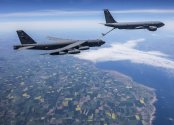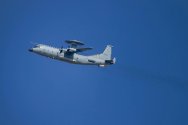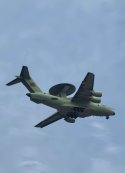They're just talking about the systems installed on USAF aircraft.its not because of legacy.
https://www.reddit.com/r/aviation/comments/107h3xn
Booms have 3-4 times better flow rate. So, a 10 minute refueling with a boom on a bomber will become 30-40 minute long slog with a drogue. Its doable but incredibly risky and tiring to be refueling for that long.
Physically due to pressure and diameter it is easier and probably lighter to achieve the same flow rate with a hard line than a flexible line, but it's not a limit, if for operational reasons you want to use a drogue, you can design a drogue to achieve any flow rate, e.g. a dedicated fuselage mounted high flow drogue.
The problem with boom is a dorsal boom receptacles don't work with drogues, so an aircraft with only a boom receptacle can only be refuelled by tankers with a boom, whereas if you design all aircraft to work with drogues then they can all be refuelled by any drogue on any tanker, while you still retain the ability to fast refuel via high flow drogue, or even a boom via a drogue attachment.
Last edited:






